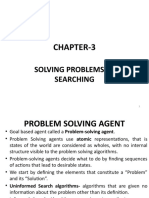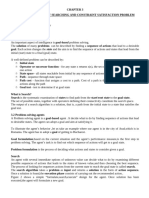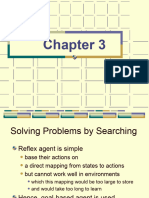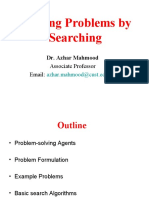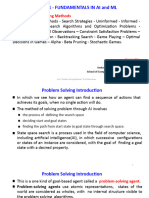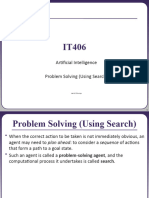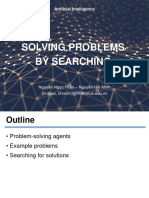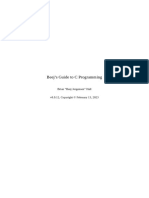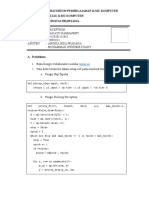0% found this document useful (0 votes)
33 views30 pagesAI Lecture 3
The document discusses problem-solving agents, specifically goal-based agents that find sequences of actions leading to desired states. It outlines the components of well-defined problems, search algorithms, and examples of toy and real-world problems. Additionally, it covers the performance metrics for problem-solving algorithms, such as completeness, optimality, time complexity, and space complexity.
Uploaded by
khinsisthway36Copyright
© © All Rights Reserved
We take content rights seriously. If you suspect this is your content, claim it here.
Available Formats
Download as PDF, TXT or read online on Scribd
0% found this document useful (0 votes)
33 views30 pagesAI Lecture 3
The document discusses problem-solving agents, specifically goal-based agents that find sequences of actions leading to desired states. It outlines the components of well-defined problems, search algorithms, and examples of toy and real-world problems. Additionally, it covers the performance metrics for problem-solving algorithms, such as completeness, optimality, time complexity, and space complexity.
Uploaded by
khinsisthway36Copyright
© © All Rights Reserved
We take content rights seriously. If you suspect this is your content, claim it here.
Available Formats
Download as PDF, TXT or read online on Scribd
/ 30


